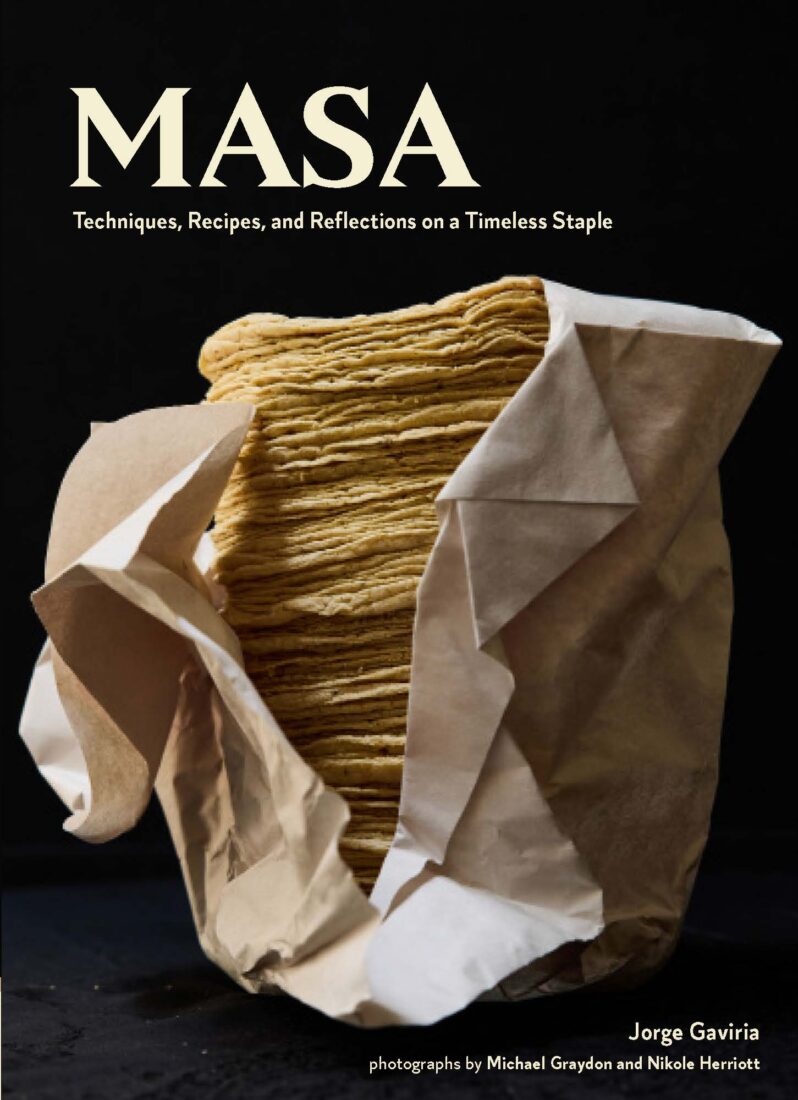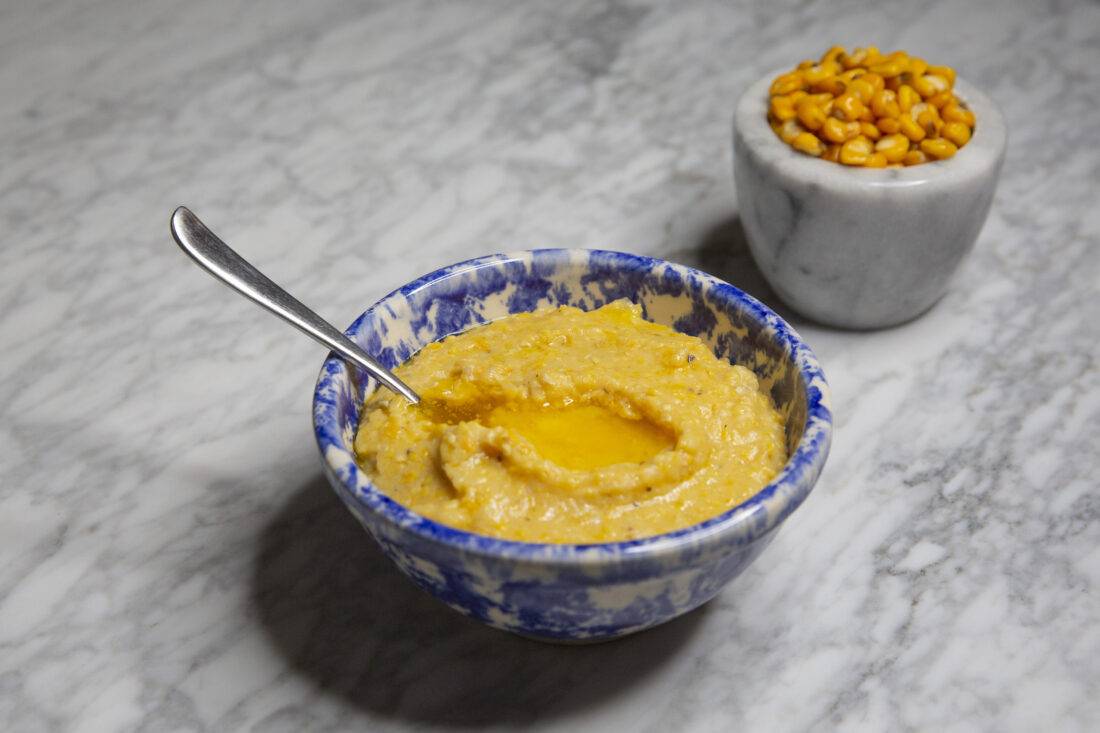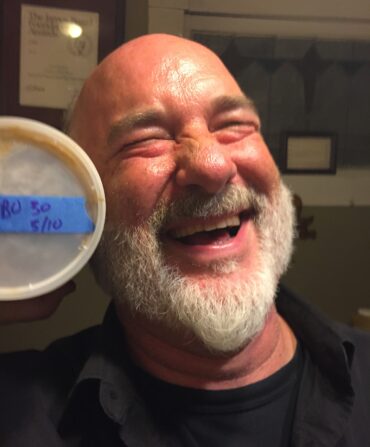The universe was calling me to make wood ash hominy.

In September, I sat down with a copy of Janisse Ray’s The Woods of Fannin County and finished it in one sitting. The novel tells the real-life story of the eight Woods siblings, who were abandoned in the 1940s in the Blue Ridge Mountains of North Georgia. For four years, the children—the youngest of whom was an infant, and the oldest ten—lived in an uninsulated cabin, fighting off the cold, snakes, abuse, and hunger any way they could.
Their mother, Ruby, left the kids with little, but she did show them how to make hominy.
“We would have to steal the corn to start with,” Richard Woods, who was five at the start of the book, recently told me. “We’d shuck it, get the kernels off the cobs, and soak it for a long time. Ruby used potash, but we didn’t have any potash. So we used ashes from the fire and would boil it with the corn. That would take the hulls off. It was just a big ole pot of corn, busted open.”
During their time in the mountains, the children ate hominy year-round, as long as they had corn. In the winter, they’d let the pot freeze over to preserve the kernels and then use a hatchet to hack away icy chunks. “We’d eat the ice, corn, and all,” said Woods, now an octogenarian living in Alabama.
The Woods children did not know it at the time, but they were following the ancient ritual of nixtamalization, in which dried corn gets boiled in an alkaline solution with lime or ash. The term nixtamal is an amalgam of the Nahuatl words nixtli (ashes) and tamali (cooked maíz, or corn), and the technique has been practiced for thousands of years in modern day Central America and Mexico. When milled, nixtamal becomes masa, the dough that forms tortillas, sopes, huaraches, tamales, and tlacoyos, among hundreds of other corn-based Mexican staples.
As corn and Indigenous tribes migrated north, so did the practice. On the East Coast of the United States, Native people traditionally ate nixtamalized corn as a porridge and in stews; European settlers called it hominy, an anglicized version of the Powhatan (Algonquin) term rokahamĕn.
Nixtamalized corn is a miracle food. The process changes the enzymatic structure of corn; it intensifies the aroma and flavor. The kernels’ skin (or pericarp) slips off, and the starches start to gelatinize. Critically, it also unlocks corn’s most beneficial nutrients: niacin, iron, protein, and dietary fiber.
That knowledge, however, was lost with the systematic eradication of Native people and culture. In fact, only a few years before Ruby left her children in the mountains, scientists had determined that a forty-year scourge of pellagra had been caused by malnutrition, specifically niacin deficiency.
Before the twentieth century, folks in the South mostly ate locally grown corn, a fair amount of it in the form of hominy and hominy grits. But in 1901, Beall, a Chicago manufacturer, released the first corn degerminator, a device that removes the crop’s most perishable and nutritious part. Inexpensive cornmeal quickly flooded the market and became the foundation of sharecroppers’ limited diets. In just a year, pellagra showed up.
A painful, life-wrecking disease of the poor, pellagra induced diarrhea, dermatitis, and dementia. All told, three million people developed the disease, and a hundred thousand died of it. Old-fashioned hominy prevented and cured it, as did newfangled, niacin-enriched cornmeal and grits.
Ruby, whose mother the children presumed to be of Tsálăgĭ (Cherokee) descent, likely knew the life-sustaining power of hominy. Except for the baby, Woods said that none of the children ever got sick. “I don’t know how we survived the cold,” he told me. “It was a lot worse than what’s in the book.”
I’d like to imagine it was some combination of divine intervention, grit, sibling fidelity, and a mostly Native diet (they also foraged for walnuts, hickory nuts, berries, apples, and pears). Of course, hominy is not the point of The Woods of Fannin County, a heartbreaking family drama. But it got under my skin. If a bunch of children could make wood ash hominy, could I?
The most common way, by far, to nixtamalize corn these days is to boil it with food-grade calcium hydroxide (aka cal, lime, pickling lime, or slaked lime). But I wanted to use ash—a problem for a Manhattanite without access to a fireplace or pit.

Just a few weeks after I finished The Woods of Fannin County, I found my answer in a new cookbook from Jorge Gaviria, Masa: Techniques, Recipes, and Reflections on a Timeless Staple. Since 2014, Gaviria’s shop Masienda has supplied chefs such as Enrique Olvera, Sean Brock, Alex Stupak, Rick Bayless, and Claudette Zepeda with heirloom Oaxacan corn and masa harina.
Masa, the book, codifies for home cooks how to nixtamalize and grind corn for various applications, and its recipes will teach you how to make taquitos, chochoyote dumplings, and gorditas from scratch. But I found what I was looking for on page 88: instructions for wood ash nixtamal and a suggestion to source ash from restaurants with wood-burning grills.
Although wood ash nixtamal is still practiced in pockets of Mexico, especially in Oaxaca, Gaviria learned the technique from the Southern chef Craig Diehl, and he says part of its charm is the light campfire scent it imparts on the corn. Gaviria’s method is more precise than the Woods’, a comfort for this first-timer, but just as simple:
Measure one part sifted ashes to one part corn. Boil the ash with four parts water for fifteen minutes and rest for a half hour, letting the ashes settle at the bottom of the pot. At this point, Gaviria suggests gently straining the solution and discarding the ash, which can be a pain to clean from your corn. Then boil the corn in the resulting solution (always in a nonreactive pot) until it reaches the desired tenderness. The corn then steeps in the liquid for six to twelve hours, at which point the corn skins should be visibly loose. Rinse the corn in a colander, rubbing off some or all of the skins (how much depends on the use). Now, folks, you have wood ash hominy.
“It’s as foolproof as it can get, but it takes a little bit of time to get the hang of it,” Gaviria warned me. “I didn’t really connect with it until I tried it a few times. Give yourself a little grace.”

Before I started cooking, I called Glen Roberts at Anson Mills. I had ordered a pound of Anson Mills’ Henry Moore yellow hominy corn a few weeks before. Technically, you can nixtamalize any corn, but for hominy, Roberts says to look for kernels with a large germ to endosperm ratio. “All the aminos that are important to life are hiding in the germ, not in the soft starch,” he says.
I also planned to make Anson Mills’ recipe for fresh hominy grits, which requires cooking the corn just to al dente and then pulsing the kernels in a food processor. For all the grits I’d eaten in my life (instant, quick, stone-ground, baked, fried, casseroled, and otherwise), I couldn’t remember eating hominy grits.
Roberts suspects it’s because of hominy’s mixed legacy in the South. “To this day, I have neighbors whose family, even if you mention hominy, they’ll walk out of the room,” Roberts tells me. “Why? Because everybody who was poor had to eat it. They hated it because they had to eat it, and it had a lot of stigma about it all the way into the sixties.”
Hominy may have protected Southerners from pellagra, but divorced from Native culture, people turned to cheap, industrial, and poisonous lye (aka sodium hydroxide) to convert corn into hominy. “It was beyond poverty food—it was the cuisine of shame,” says Roberts, whose mother prepared and ate hominy in secret during the Depression but would not serve it at her Aiken, South Carolina, restaurant.
Roberts remembers his mother making hominy at home, singing songs in rhythm as she rinsed the kernels, but he learned how complex and spiritual the process can be in Mexico and the American Southwest. He once joined Ramona Button, an Akimel O’odham farmer, on a spirit walk through the Arizona desert, and they discussed the nuances of sourcing nixtamal material from plants, depending on which way the wind blows. “She would pick blossoms and fill a little pouch with that and mix the blossom ash in with other things and create totally amazing nixtamals,” he recalls.
The day before I spoke to Roberts, I happened to be on a Zoom chat with Kristina Stanley, the operations manager for I-Collective, a group of Indigenous chefs, activists, herbalists, and seed and knowledge keepers. On the call, Stanley, who is Anishinaabe, a member of the Red Cliff Band of Lake Superior, shared the latest edition of A Gathering Basket, the organization’s multimedia cookbook. My jaw dropped: Its subject was ash. In the book, chef Karlos Baca, who is Diné and Nuchu, prepares corn husk ash for nixtamal; and students from the Dził Ditł’ooí School of Empowerment, Action, and Perseverance gather Utah juniper to make ash, an important calcium source in traditional Diné (Navajo) diets.
Not all ash, I learned, was safe to use. Pine wood ash is poisonous, but pine needle ash, according to Roberts, makes incredible hominy. So does hickory ash, if you can acquire some from a local barbecue joint. In general, hardwoods work well, and I scooped up two quarts of ash made from a mixture of oak and ash (the tree) from a chef friend.
Finally, I gathered the courage to put down my books and cook a pot, blending a little of Gaviria’s and Roberts’s techniques and praying for a dash of the Woods kids’ luck. During the overnight steep, the nixtamal solution turned a deep shade of mahogany, and I woke up to a kitchen that smelled like fresh tortillas. I barely had to wash off the skins; they’d nearly dissolved in the liquid (note to self: watch the pH on my next attempt).
Once the kernels were crushed and cracked in a food processor, I cooked the hominy grits with nothing more than water until they softened and loosened into a porridge. I ate them simply with butter and hot sauce, which is all you need, and again with duck confit and greens, the latter of which tasted like a deconstructed taco. I also froze a cup of whole kernels, which I cooked a week later for a batch of smoky, chili-laced posole.
It’s hard to fathom wholesome, filling, fragrant hominy ever being a source of shame or falling out of favor. Yes, the project overtook my small kitchen for a day and a half (and my brain for longer), but I’ll do it again, maybe with another ash variety or while gathered with friends around a campfire. I can’t help but be romantic about wood ash hominy. It’s a little mystical. It’s medicine. And it’s a damn fine food that I doubt I’ll ever fully understand.








